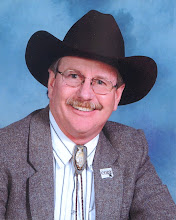In her Op Ed piece on March 30, 2009, in the San Francisco Examiner, Cheryl K. Chumley asserted that the “UN is taking control of U.S. land in the name of conservation.” She goes on to state so many other factual errors about the World Heritage Convention that I am compelled to respond and set the record straight.
Ms. Chumley is alluding to the announcement by the US Department of the Interior that the United States of America has revised its list of sites that may be nominated by the USA to be considered for inclusion on the List of World Heritage.
I was a Deputy Assistant Secretary of the Interior from 2002 to 2008, and in that capacity, I had the distinct privilege of leading the USA Delegation to the meetings of the World Heritage Committee for five years, getting the USA elected to the Committee, and I am well versed in the World Heritage Convention, the Operating Guidelines, and the Rules of Procedure. The Convention, which the USA helped author and was the first signatory, is administered through the United Nations Education, Science, and Culture Organization (UNESCO) by the 21 State Party Members of the World Heritage Committee. The USA remained active in and on the World Heritage Committee even during its 20 year hiatus from UNESCO. When under President Bush’s leadership the USA rejoined UNESCO, I worked closely with UNESCO Ambassador Louise Oliver on matters related to World Heritage.
I led the effort to have the Committee remove Yellowstone National Park from the List of World Heritage in Danger and I paved the way for the eventual removal of the Everglades National Park from the same list. I was involved in the rewrite of the Operating Guidelines where the USA and its allies made a strong case for the sovereignty of State Parties as articulated in the Convention.
Inscription of a site on the List of World Heritage does not in any way, shape, or form transfer ownership or control of the site to the United Nations or UNESCO. It is an acknowledgment of three things. To be inscribed, a site must have 1) Outstanding Universal Value (OUV), 2) it must have an established legal structure to conserve or protect the resources, and 3) the site must have an established management plan. “Outstanding Universal Value means cultural and/or natural significance which is so exceptional as to transcend national boundaries and to be of common importance for present and future generations of all humanity. As such, the permanent protection of this heritage is of the highest importance to the international community as a whole. The Committee defines the criteria for the inscription of properties on the World Heritage List.” (Operational Guidelines, IIA, Paragraph 49)
The only way that the Committee can exert any pressure on a State Party regarding conservation or management of a site is to do one of two things. First, the Committee may vote to put a site on the List of World Heritage in Danger which makes international assistance and money available to the site owner in order to remedy the issues identified by the Committee, or secondly, the Committee may vote to remove the site from the List of World Heritage if it has been determined that the site has lost its OUV.
I also initiated and led the multi-year effort to develop the new USA Tentative List to which Ms. Chumley refers. This is the list of sites that the USA considers to have Outstanding Universal Value and that may be nominated by the USA for inscription on the List of World Heritage. A Tentative List is required by the Convention and the previous USA Tentative List had over seventy sites. Our goal was to substantially reduce the number of sites on the list and confine those properties listed to sites that had the support of the owners, the local community, and local leaders. These sites were not put forth by the United Nations or UNESCO. The sites were submitted by the owners, underwent a rigorous review process, required written documentation of local support, and were publicly vetted.
While the World Heritage Committee and certain of its members have from time to time tried to exert excessive influence on the management of sites and have even tried to impose “buffer zones” around sites, the fact remains that all World Heritage Sites remain exclusively under the control of the property owners and the laws of the nation in which the site is located. I am a strong proponent of private property rights and I have worked to ensure that these rights are protected throughout my tenure at Interior. For the USA, most World Heritage Sites are Federally-owned properties, but there are today a few State-owned, Tribal-owned, and privately-owned World Heritage Sites in the USA. The owners of those properties remain in control of the site and there has never been a documented sighting of blue-helmeted soldiers or black-helicopter operations at any World Heritage Site in the USA.
Subscribe to:
Post Comments (Atom)


No comments:
Post a Comment